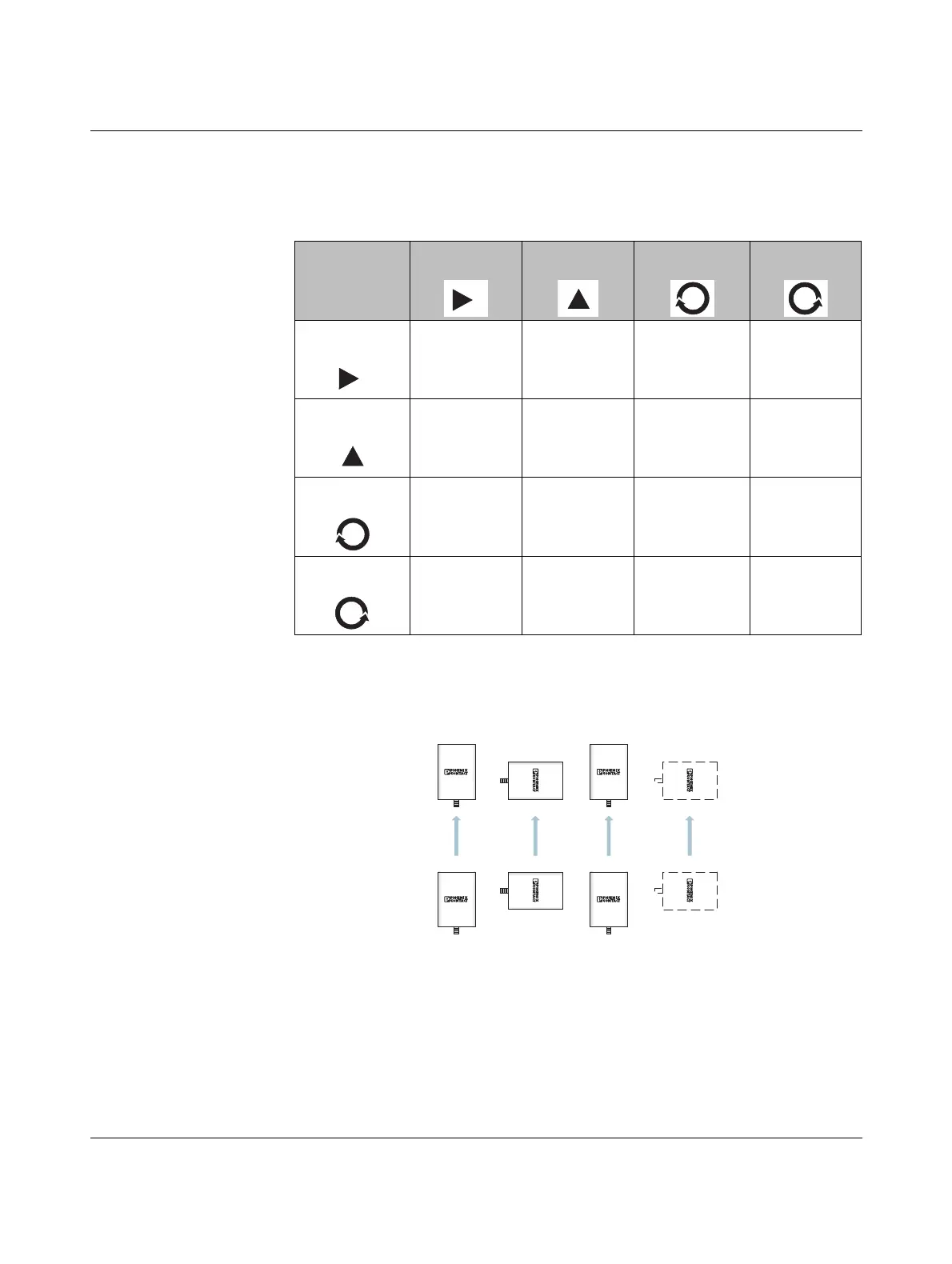Planning wireless systems
105542_en_05 PHOENIX CONTACT 135 / 198
– In a highly reflective environment: use antennas with circular polarization. This will
avoid polarization losses. You can also combine circularly and vertically polarized
antennas.
– If you operate several wireless paths directly next to one another in parallel, you can
alternately align directional antennas horizontally and vertically. The signals of the
various wireless paths will therefore be decoupled.
.
Figure 8-7 Decoupling of wireless paths due to directivity and different polarization
levels
Table 8-4 Polarization of transmitter/receiver antennas
Polarization Horizontal Vertical Circular
clockwise
Circular counter-
clockwise
Horizontal
Yes No
Yes, but 3 dB
loss
Yes, but 3 dB
loss
Vertical
No Yes
Yes, but 3 dB
loss
Yes, but 3 dB
loss
Circular
clockwise
Yes, but 3 dB
loss
Yes, but 3 dB
loss
Yes No
Circular counter-
clockwise
Yes, but 3 dB
loss
Yes, but 3 dB
loss
No Yes

